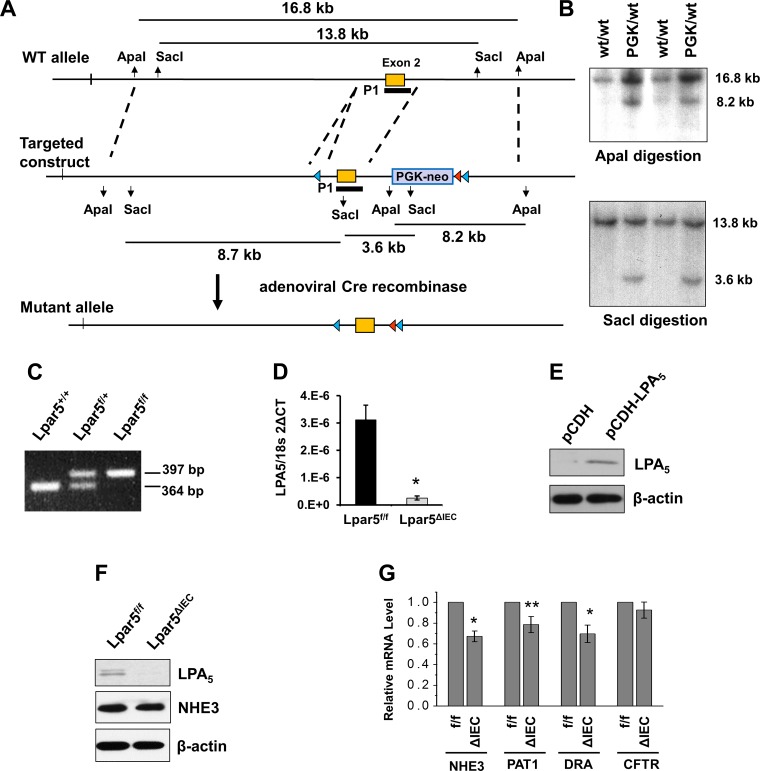Fig. 1.
Generation of the floxed lysophosphatidic acid receptor 5 (Lpar5) allele in mice. A: design of cloning vectors and targeting strategies. Part of the Lpar5 gene containing exon 2 is shown at top (WT allele). LoxP and Frt are marked by blue triangle and red triangle, respectively. The targeting construct was generated by inserting 3 Lpar5 fragments into pFlexible. The Frt-flanked phosphoglyceride kinase-neomycin (Pgk-neo) selection cassette was removed using adenoviral Cre recombinase. B: Southern blots of embryonic stem (ES) cell genomic DNAs digested with ApaI or SacI using probe P1 are shown. Homologous recombination produced a 8.2-kb (top) and a 3.6-kb (bottom) band. C: PCR genotyping showing the wild-type (WT; 364 bp) and altered Lpar5 (397 bp) products. D: quantitative (q)RT-PCR for Lpar5 mRNA in intestinal epithelial cells (IECs) indicate knockdown of Lpar5 in Lpar5ΔIEC mice. *P < 0.01; n = 3. E: Western blot of Caco-2 cells transfected with the lentiviral pCDH-carrying LPA5 is shown. F: Western blot analysis showing absence of LPA5 and unaltered Na+/H+ exchanger 3 (NHE3) expression in Lpar5ΔIEC mouse intestine. G: qRT-PCR comparing mRNA expression of NHE3, putative anion transporter 1 (PAT1), downregulated in adenoma (DRA), and cystic fibrosis transmembrane conductance regulator (CFTR) in jejunum of Lpar5f/f (f/f) and Lpar5ΔIEC (ΔIEC) mice. *P < 0.01, **P < 0.05 vs. Lpar5f/f; n = 6.

